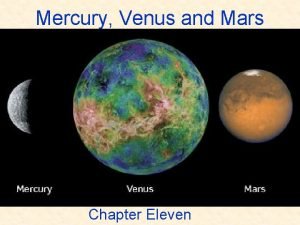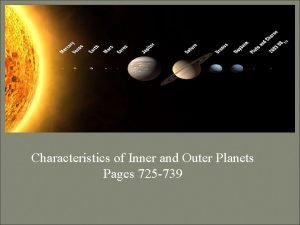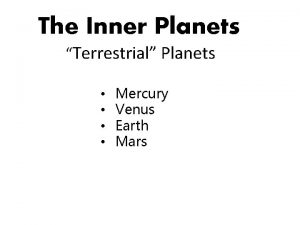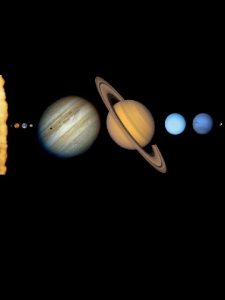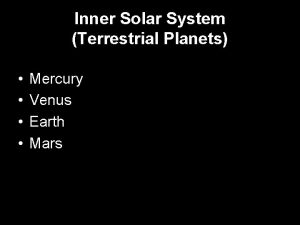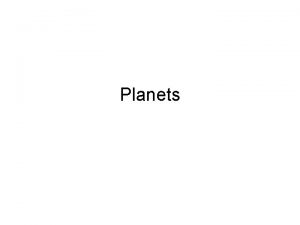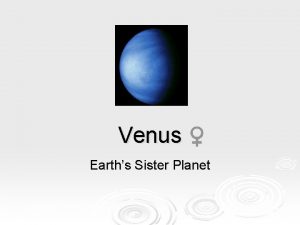PLANETS COULTER THE INNER PLANETS Mercury Venus Earth







- Slides: 7

PLANETS COULTER

THE INNER PLANETS • Mercury • Venus • Earth • Mars • Rocky planets. Terrestrial planets

MERCURY • Smallest terrestrial planet. 4, 879 KM • Closest to the sun. 58, 000 km • Virtually no atmosphere. • High daytime temperatures (430 c) low -170 C • Much of what we know about Mercury has come from one probe, Mariner 10. photos from this probe show many plains and craters. The craters indicate that not much has changed on Mercury’s surface for billions of years. We named the craters after famous artists, writers, musicians.

VENUS • • • Density and internal structure are similar to Earth. • Venus rotates in the opposite direction of most other planets. Astronomers hypothesize that a large object struck the planet long ago altering its original rotation. • Venus has achieved the greenhouse effect. An atmosphere full of carbon dioxide and designed to trap heat. Causing it to be the hottest of all planets! So hot its average temp would melt lead… Atmosphere is so thick always cloudy (clouds are made with sulfuric acid) Venus rotates so slowly that its day is longer than its year! 7. 5 Earth months to revolve around the sun and 8 months to rotate once on its axis.

EARTH • 150, 000 km or 1 AU • Earth is unique in the solar system in having liquid water at its surface. • Only Earth has an atmosphere that is rich in oxygen.

MARS • 228, 000 km • Atmosphere more than 95% carbon dioxide. • No liquid water, frozen at the polar ice caps. • Because Mars has a tilted axis it has seasons like Earth. During Martian winter the ice cap grows larger as a layer of carbon dioxide covers it. One ice cap grows while the other sinks.

SOLVING FOR ASTRONOMICAL UNITS • Earth is 150, 000 km away from the sun or 1 astronomical unit (AU) • If Jupiter is 779, 000 km away how many astronomical units (AU) is that? • Well… • 779, 000/150, 000=5. 19 AU • Can you solve for the other planets? ?





